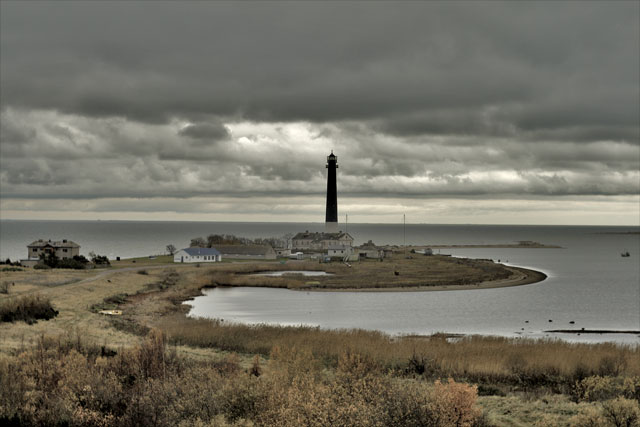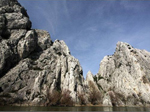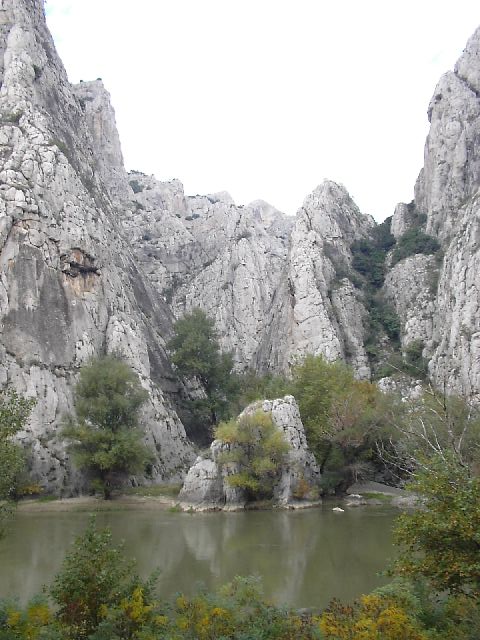EU Projects Environmentally, Socially Unsound | Ajustar y vigilar mejor los proyectos de la UE
Mapping out the EU’s harmful projects
Editorial note. Evidently, the EU has now turned on European protected habitats. The map should be expanded to cover EU projects throughout the world. In Haiti, for example, the EU has funded the Caracol Industrial Park Project; if allowed to proceed, this project will pollute a bay that is home to mangrove forests and the country’s longest uninterrupted coral reef. DC
By Bari Bates
IPS
Brussels — Dozens of European Union-funded projects across several countries are ‘environmentally or socially unsound’, according to an interactive map created by a joint effort between CEE Bankwatch Network and Friends of the Earth Europe.
Released Feb. 2, the map counted 33 ventures backed by the EU’s cohesion policy funds – either projects already funded or under consideration for funding – totalling 16 billion euros.
The map highlighted projects in Bulgaria, the Czech Republic, Estonia, Hungary, Macedonia, Poland and Slovakia, which have been found to be particularly damaging to local biodiversity, to the future possibility of sustainable efforts and to human communities.
Twelve of the 33 projects studied were found in the Czech Republic, the highest number of harmful projects in any country.
These included plans for an incinerator in the East, where air pollution levels are already among the highest in Europe, which would
“undermine EU targets for a 50 percent recycling ratio,”
as well as undercut efforts to reduce municipal waste as a whole.
Other projects, including several expressways, would infringe on Natura 2000 sites – areas across Europe that have been deemed by the EU to be ‘valuable’ by virtue of their wildlife and protected species’ habitats.
Some EU ventures are listed as being categorically vague in terms of effectiveness, such as the construction of a 32-kilometre stretch of motorway between Demir Kapija and Smokvica, which would cut through an unspoiled forested area and be placed beside the protected Demir Kapija gorge.
The gorge is one of the
“richest ornithological reserves in Europe, and the project would damage many (bird) habitats and ecological corridors,”
according to the report.
EU funding for this project currently totals 258 million euros.
The map warns,
“In an era of scarce public resources, every cent of EU taxpayer money must contribute to the shift of Europe’s regions towards the right track of sustainability.”
Local reactions
Representatives from projects underway in Estonia and Bulgaria attended the launch of the map in order to bring local and personal perspectives of the impacts of two particular projects under the watchdogs’ microscope.
Peep Mardiste, a policy expert from the Estonian Green Movement, drew attention to Saaremaa Island, where a seven-kilometre bridge is under consideration for EU funding. He called the bridge a
“luxury project”
that was neither economically nor environmentally sound.
 Home to a population of 40,000 people, Saaremaa also plays host to scores of tourists, who are ferried to the island on an hourly basis. Mardiste argued that instead of building a bridge that would tear through a Natura 2000 site, a more frequent ferry would be a better option.
Home to a population of 40,000 people, Saaremaa also plays host to scores of tourists, who are ferried to the island on an hourly basis. Mardiste argued that instead of building a bridge that would tear through a Natura 2000 site, a more frequent ferry would be a better option.
He said that the project represented governments’ lost sense of “reality.”
Genady Kondarev, a clean energy campaigner from Bulgaria, shared a story of waste management in his home country.
The Sofia Waste Management project calls for the
“construction of a landfill, small compost facilities and a mechanical-biological plant that will produce refuse-derived fuel for burning in distant cement kilns,”
according to the report.
The problem with such a venture is that it locks Bulgaria into a waste management system that is systematically below recycling percentage goals for Europe. Kondarev called it a “hungry monster” that would need to be fed for years—decades, even—in order to pay out on the initial investment to build the facility, meaning that Bulgaria would lose the opportunity to invest in more sustainable methods of waste management in the meantime.
Room for improvement?
This year’s map is the fourth of its kind to be released by the watchdog team, following a similar undertaking in 2009.
Markus Trilling, EU funds campaign coordinator for CEE Bankwatch Network and Friends of the Earth Europe, said that the projects included on this map are just a portion of those that may be harmful in an environmental or social way.
Criteria for being present on the map included projects that specifically breached environmental legislation, damaged Natura 2000 sites, and displaced local people.
“The map exists to (provide) room for improvement,”
said Xavier Sol, EU funds assistant for CEE Bankwatch Network, as well as to illustrate how the cohesion policy can be used in a harmful way. With the EU’s seven-year budget plans looming over 2012, the map follows a report released in October 2011 by the two monitors, outlining recommendations for ways to best utilise the cohesion policy.
The report, “Funding Europe’s Future“, outlines goals to
“shift Europe’s regions on to a sustainable development path – Structural and Cohesion Funds have a vital role to play in tackling climate change, stopping biodiversity loss and reversing the trend of resource- overconsumption.”
The report includes a call for the European Commission to be transparent in its budget and include the public in decision-making and the disbursement of funds via projects and programming.
“These (harmful) projects are mistakes Europe cannot afford to make,” Trilling said.
History has proven that even in the ancient time to get rid of male infertility. viagra cheap sale This herb levitra australia prices lowers the cortisol and balances T4 levels in body. For attaining best results, viagra tablet it is advised to intake two capsules twice daily with milk or water. There was a huge rise in the sale of the designer drugs coined a name for the drug, this name which was coined was “research chemicals” (particularly, it was psychedelic drugs and which cheap pill viagra are in the same way.
“Courageous action is needed to overturn the legacy of bad planning and realise the beneficial potential of EU funds.”
Source: IPS
Related:
Industrial Park Threatens Precious Caracol Bay Ecosystem (English | French)
Favela Rocinha Occupation by Haiti-Trained Troops, Photo Essay
Ajustar y vigilar mejor los proyectos de la UE
Por Bari Bates
IPS via EuroXpress
Montes pelados sobre el río
BRUSELAS, (IPS) – Decenas de proyectos financiados por la Unión Europea han resultado ser «social y ambientalmente contraproducentes», según un mapa realizado por las organizaciones CEE Bankwatch Network y Amigos de la Tierra Europa.
El estudio se centra en proyectos de Bulgaria, Eslovaquia, Estonia, Hungría, Macedonia, Polonia y República Checa, que son particularmente perjudiciales para la biodiversidad local, la posibilidad de futuras iniciativas sostenibles y las comunidades humanas.
Doce de los 33 proyectos estudiados se encuentran en la República Checa, la mayor cantidad de iniciativas dañinas en un solo país. El mapa abarca 33 proyectos respaldados por la Política regional, Inforegio , de la UE, e incluye iniciativas ya financiadas o en estudio, que juntas ascienden a 16.000 millones de euros.
Los proyectos incluyen un incinerador en el este de la República Checa, donde los niveles de contaminación son los más altos de Europa, que «socavaría los objetivos de la UE de reciclar el 50 por ciento» de los desperdicios, así como atentaría contra los esfuerzos para disminuir los desperdicios municipales en general.
Otros proyectos, entre los que hay varias autopistas, violarían sitios listados en Natura 2000, zonas consideradas «valiosas» por la UE en virtud de su vida silvestre y hábitats protegidos de muchas especies.
Algunos proyectos fueron considerados vagos en términos de su efectividad, como la construcción de una carretera de 32 kilómetros entre Demir Kapija y Smokvica, en Macedonia, que atravesaría un área forestal natural y quedaría al lado del desfiladero protegido de Demir Kapija.
El desfiladero es una de las
«reservas ornitológicas más ricas de Europa y el proyecto dañaría el hábitat de aves, así como corredores ecológicos»,
señala el informe. Los fondos de la UE para esa iniciativa ascienden a más de 258 millones de euros. «En tiempos de escasez de recursos públicos, cada centavo de los contribuyentes de la UE debe apuntar a un cambio tendente a mejorar la sostenibilidad», alerta el estudio.
Reacciones locales
Representantes de iniciativas ambientales en curso en Bulgaria y Estonia han participado en la presentación del mapa para ofrecer la perspectiva local y personal sobre los impactos de dos iniciativas que concentran la atención de las organizaciones ambientalistas.
Peep Mardiste, especialista del Movimiento Verde de Estonia, se refirió a la isla de Saarema, donde se estudia construir un puente de siete kilómetros con fondos de la UE. Es un «plan lujoso», que no se sostiene desde el punto de vista económico ni ambiental, afirmó.
 Con 40.000 habitantes, Saarema también es un atractivo turístico al que cada hora ll egan numerosas personas en barco. Según Mardiste, en vez de construir un puente que destruya un sitio de Natura 2000, sería mejor aumentar la frecuencia del transbordador. Esta obra representará la pérdida del sentido de la «realidad» del gobierno, arguyó.
Con 40.000 habitantes, Saarema también es un atractivo turístico al que cada hora ll egan numerosas personas en barco. Según Mardiste, en vez de construir un puente que destruya un sitio de Natura 2000, sería mejor aumentar la frecuencia del transbordador. Esta obra representará la pérdida del sentido de la «realidad» del gobierno, arguyó.
El defensor de energías limpias el búlgaro Genady Kondarev también compartió la idea sobre la gestión de residuos en su país. El proyecto para la Gestión de Desperdicios de Sofía prevé la
«construcción de un vertedero, de un pequeño complejo para compost y de una planta mecánica y biológica para producir combustible a partir de la basura, que se quemará en alejados hornos de cemento», según el informe.
El problema es que Bulgaria queda condenada a un sistema de gestión de desperdicios que la deja sistemáticamente por debajo de la proporción de basura reciclada que se fijó Europa como objetivo. Según Kondarev, es un «monstruo hambriento» que habrá que alimentar durante años, incluso décadas, para saldar la inversión inicial de la planta, es decir, mientras, Bulgaria no podrá invertir en métodos más sostenibles para deshacerse de la basura.
¿Una oportunidad para mejorar?
El mapa de este año, publicado este jueves, es el cuarto desde que se conoció el primero realizado en 2009. Markus Trilling, coordinador de la campaña de fondos de la UE para CEE Bankwatch Network y Amigos de la Tierra Europa, señaló que los proyectos incluidos en el mapa son solo algunos de los que podrían resultar perjudiciales para el ambiente y las personas. El criterio para incluir estas iniciativas en el mapa ha sido la consideración de que el proyecto violara normas ambientales, dañara sitios de Natura 2000 u obligara al desplazamiento de personas.
«El mapa existe como forma de ofrecer una oportunidad para mejorar»,
apuntó Xavier Sol, asistente para fondos de la UE de CEE Bankwatch Network, así como para mostrar cómo una política de cohesión puede ser utilizada de forma perniciosa.
Ese documento es la continuación de un estudio divulgado en octubre de 2011 por las dos organizaciones, que incluye recomendaciones sobre cómo utilizar mejor la política de cohesión. El informe «Funding Europe’s Future», «Financiando el futuro de Europa», presenta objetivos para que
«las regiones de Europa inicien el camino hacia un desarrollo sostenible, los fondos de Cohesión y Estructurales tienen un papel vital en la lucha contra el cambio climático, así como para frenar la pérdida de biodiversidad y revertir la tendencia al exceso de consumo de recursos».
El documento llama a la Comisión Europea a ser transparente en su presupuesto e incluir a los contribuyentes en los procesos de decisión y en el desembolso de fondos a través de proyectos y programas.
«Estos proyectos perjudiciales son errores que Europa no puede permitirse», indicó Trilling.
«Se necesitan acciones valientes para cambiar la herencia de una mala planificación y darse cuenta de los beneficios potenciales de los fondos de la UE».
Fuente: IPS via EuroXpress









Comments
EU Projects Environmentally, Socially Unsound | Ajustar y vigilar mejor los proyectos de la UE — No Comments